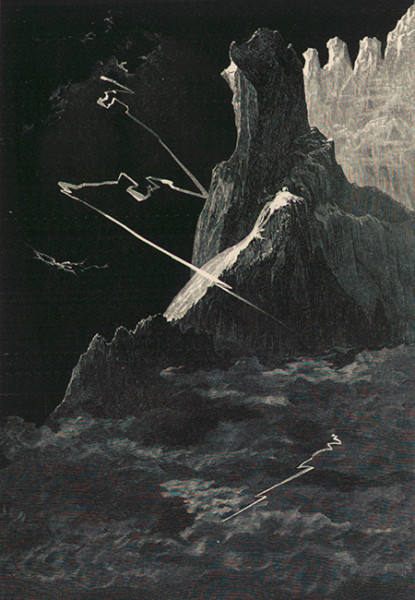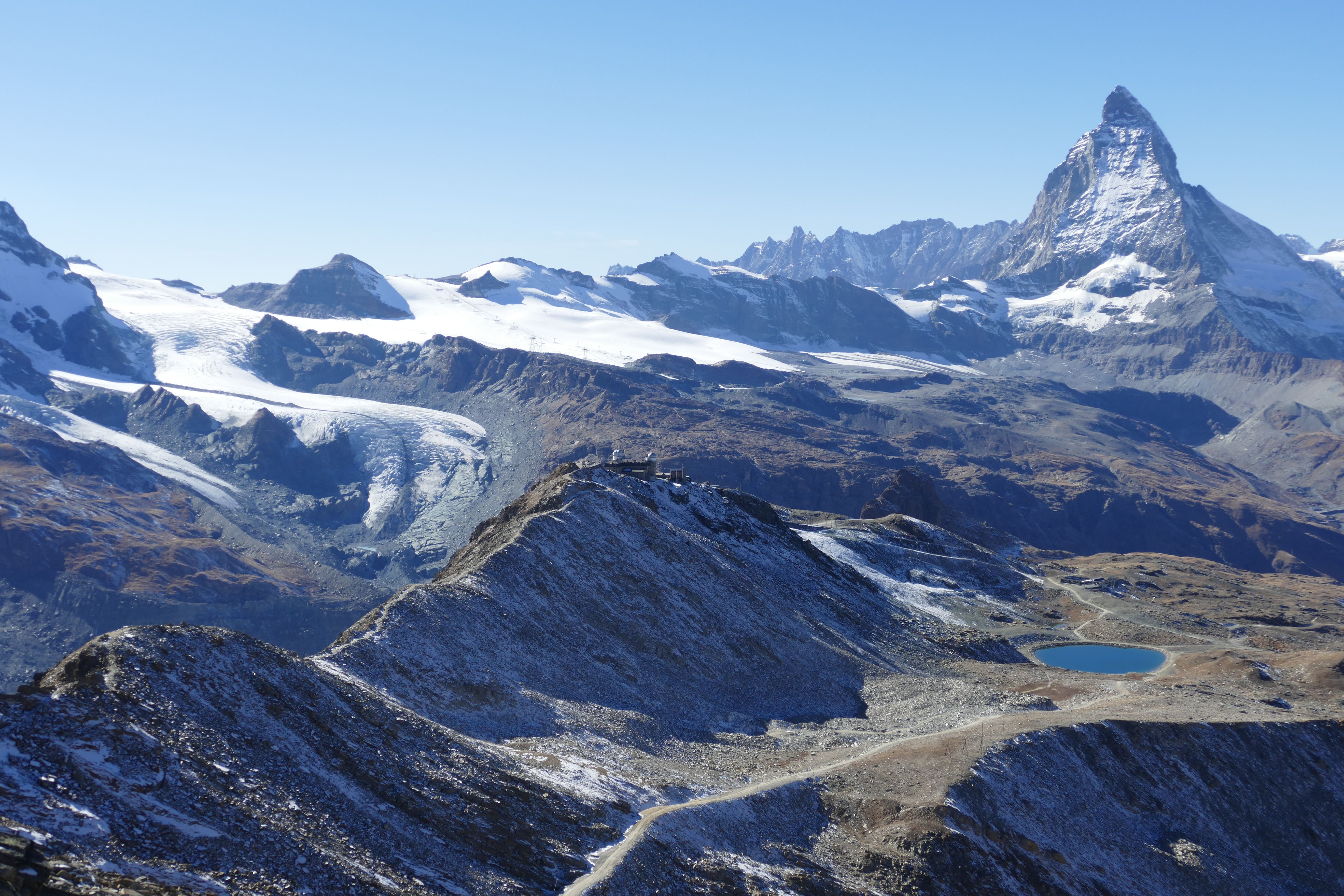Observatories in “impossible” places

By Timm Riesen
Mountains are impregnable

The Matthorn during a thunderstorm from E. Whymper: The Ascent of the Matterhorn (S. 120)
Even as late as in the middle of the 19th century people believed that the high peaks in the Alps were impregnable. Many a myth and legend were woven around the topic of these mountain peaks far off in the clouds. Slowly, with the successful first ascents of the Jungfrau (1811), the Mönch (1857), and the Eiger (1858), these places started to become de-mystified and a fierce competition broke out amongst the Alpinists to conquer the remaining peaks of the Alps. The Matterhorn was no exception and its peak the declared target of several different mountaineering and climbing fellowships. But until 1865, all attempts to go there and back again failed. E. Whymper, the leader of the first successful ascent knew the legends as well and he later wrote: “The superstitious natives in the surrounding valleys (…) spoke of a ruined city on its summit wherein the spirits dwelt; told you to look yourself to see the castles and the walls, and warned one against a rash approach, lest the infuriate demons from their impregnable heights might hurl down vengeance for one’s derision”.
In the following time, as more and more Alpinists pushed forward, a growing number of adventurers, mostly folks with a keen interest in nature and the related sciences, started to join them. Louis Agassiz began his paradigm shifting work about glacial periods being puzzled by the boulder problem, and research about regional folding and the creation of the Alps (e.g. Otto Ampferer) entered a golden age. Naturally, astronomers were ever interested in locations with a great view, and it was already well understood, that being able to go higher up would lead to ever better observing conditions as less and less atmosphere remains above the observer. A fact that was appreciated by Alfred de Quervain (1879 – 1927), a Swiss geophysicist and polar researcher, and recognising the importance and the need of high alpine research stations, he managed to convince political decision makers to only hand out the concessions to build railways up the Jungfrau and the Gornergrat under the condition of being allowed to build research stations at these locations later on.
With the telescope directly on top of the glacier
The ground-breaking ceremonies to build the railways to the Jungfrau and the Gornergrat both took place in the year 1896. To reach the high plateau below the peak of Jungfrau was extremely challenging as the railway leads through the Eiger and the Mönch. After a 16 year long period of construction, they successfully managed to cut through rock and ice into daylight again on the Jungfraujoch. The original plan to reach the peak of the Jungfrau was abandoned, and the Jungfraujoch station declared to be the final stop of the railway. With the Jungfrau railway starting their public operations, suddenly an easy access to a very high alpine location was available to normal people without the need of being an Alpinist and there were even amenities like power and water. Soon after in the Twenties and Thirties, researchers started to carry up meteorological equipment, astronomical telescopes, and gear to measure cosmic radiation and began to set up a scientific laboratory inside an icy cavern in the Mönch. Some even lived in tents for the duration of an observing campaign and put a telescope directly onto the glacier.

First astronomical observations on the Jungfraujoch by Prof. Schär (Observatoire de Genève). Image courtesy of the HFSJG.
Indeed, the vision of Alfred de Quervain regarding high alpine research in the Swiss alps became reality. A dedicated research station was build 1930 and the so called Sphinx observatory followed 1936. An international foundation, today the “International Foundation for High Altitude Research Stations Jungfraujoch and Gornergrat” (HFSJG), was established and in the Fifties, astronomical domes were added to the Sphinx along with an additional floor. The success and growing interest, especially on high altitude research and astronomy, lead to the realization of a second research station in the towers of the Kulmhotel at the Gornergrat (1966).
Today’s challenges in a high alpine environment
Today, both research station are still operational and in good condition. On the Jungfraujoch, international research in different fields is taking place, most prominently in the field of climate and environmental physics but also in medicine, glaciology, and solar astronomy. On the Gornergrat, the universities of Bern an Geneva, together with partners, run the astronomical outreach project “Stellarium Gornergrat”. The high-alpine locations continue to place great demands on the existing hardware. Wind peaks of more than 120 km/h, temperatures below -25 °C, or heavy snow falls are not uncommon. In addition, there are sometimes violent thunderstorms in summer with possible lightning strikes. With today’s advanced electronics, that are practically used everywhere, this topic has even become much more acute. Despite professional external and internal lightning protection, a series of flashes in only a few seconds left a trail of destruction on the Gornergrat last summer, both in the observatory and in the hotel itself. An extended downtime of the Stellarium of several months and countless hours of additional expenditure were the result of it. It almost seems that the demons mentioned by Whymper were still hurling some vengeance and ridicule in our direction. At least we are in good company with these challenges: Almost all important observatories are built at exciting “impossible” places, for example the telescopes in Hawaiʻi, on top of a sleeping 4200 m high volcano which will wake up sometime, or in the high mountains of Chile where the earth trembles almost daily. In Chile there are indeed telescopes whose individual mirrors are designed in such a way that they can survive an earthquake of magnitude 8 without damage. But not rain! Rain is so rare there that a cloudburst triggers emergency protocols and people put up plastic in a hurry and by hand to protect the mirrors.

The high alpine surroundings of the Gornergrat, as seen from the Hohtälli. The Kulmhotel with the two domes is visible in the middle of the picture. Image: Timm Riesen

